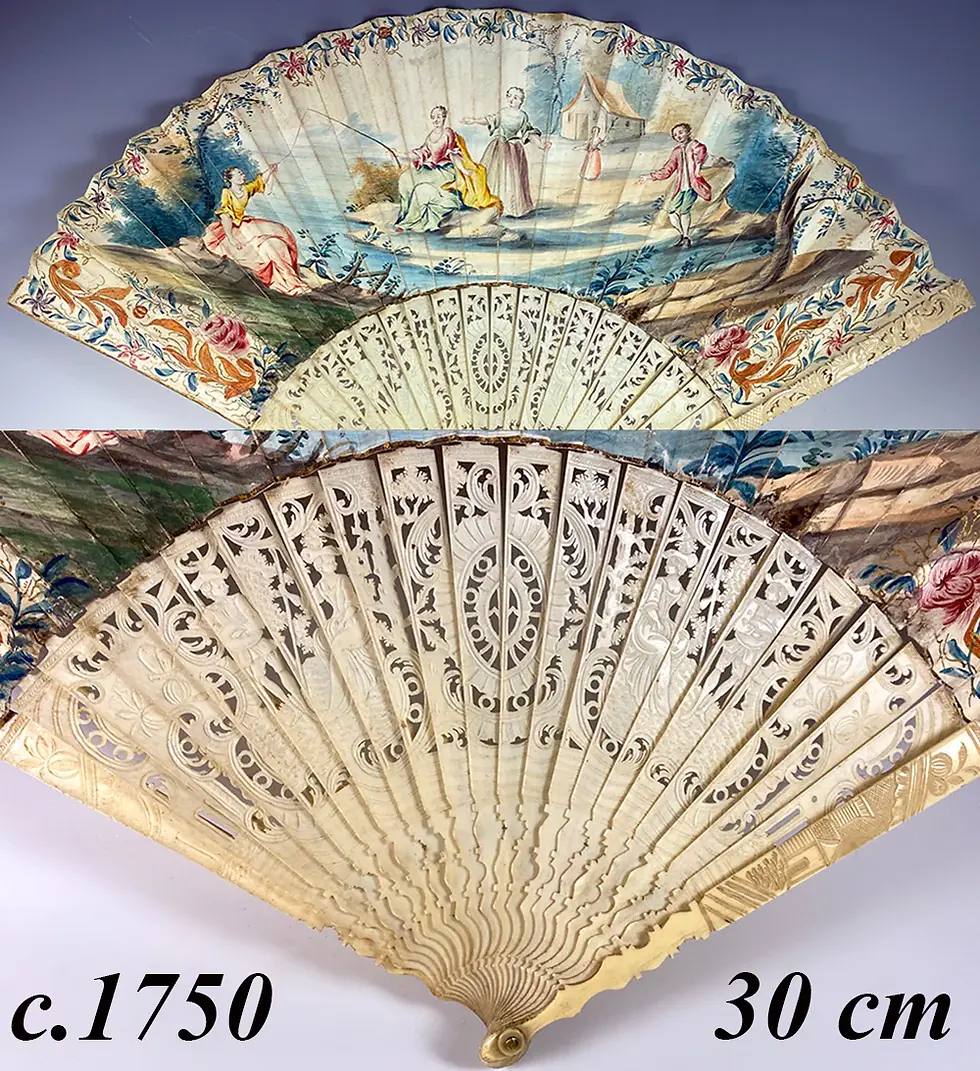"Hope for Charity"-Fashion/Accessories-Part 1
- sandykayslawsonWriter

- Jan 22, 2024
- 3 min read
Updated: Jan 24, 2024
Today, we continue our series on The Life and Times of Hope for Charity. If you are new, welcome! Hope for Charity is a Christian Historical Romance and my debut novel that is in the process of finding representation in the publishing industry. If you want to start at the beginning of this series, please click here.

Women in the Georgian Era weren't all that different from the women of today. Most wanted to be fashionable and have pretty things. Though many could not afford the best available, cheap reproductions could be found. Just like today. The average middle-lower income class woman of our time may not have the most valuable possessions, but it won't stop us from finding the best we can afford. Am I right?
Hope for Charity-Fashion/Accessories-Part 1
1.) Fans-
There is much information available about fans. There are fan designers, fan craftsmen, fan guilds, and fan museums. The fan goes back as far as . . . heat. However, in regards to the 18th century, the fan became not only a way to stay cooler but also a way to communicate. Take a look at this guide for how to use the fan.
In the eighteenth century, fans came in two forms: rigid or folding fans. Rigid fans, also called screen fans, were never as popular as folding fans because they were considered cumbersome as they could not collapse. They also lacked portability and therefore tended to be used inside a person’s home.


The fan above is advertised for sale at:
Rare Antique c.1740-50 Hand Fan 30cm Hand Painted Paper Leaf, Carved Monture, 18th Century
Regular price $1,595.00 Sale price $1,116.50
2.) Reticules-
The first bags were called reticules. With the term ‘reticule’ we refer to a small drawstring bag, probably the first ‘bag’ in the modern sense of the word. It then went on to become a synonym for any kind of purse or handbag carried by a woman. The name comes the French réticule, and originally from the latin reticulum, meaning a net or mesh. Many of the first reticules were in fact made using netting techniques.
They were made of all sorts of things—silk, velvet, brocade, leather, straw, old doilies, handkerchiefs. You name it and it could be made into a reticule. And then there were the knitted and crocheted ones. Some had adornment and some were plain Jane.
Some of the things a woman may have carried in her bag:
. . . visiting cards, a handkerchief, small bottle of perfume, or the ever-present smelling salts . . .
Here are a few different types of reticules:



Each of these categories thus far have many beautiful examples online. In fact, it was hard to choose from the examples to share with you. Join me next time as we continue to delve into accessories popular during the Georgian Era and The Life and Times of Hope for Charity.
Though, I love pretty things as much as the next woman. I am reminded that we must keep our priorities straight. The inner person is far more important than the outer. How we adorn ourselves on the outside must take a backseat to how we adorn our spiritual self.

I've heard it preached that this does not mean we can't look nice on the outside, but that our main focus needs to be the beauty within. May the Lord bless us all with a beauty that reflects love, light, and life that can only come from knowing Jesus. That is an adornment that will cost us nothing but faith and time spent in God's Word. It is the only beauty that will last.
Please subscribe so you don't miss future posts, updates, and newsletters! I would love to hear from you! Which of these accessories do you like best so far? Comment, Like, and Share to help me grow!!








コメント